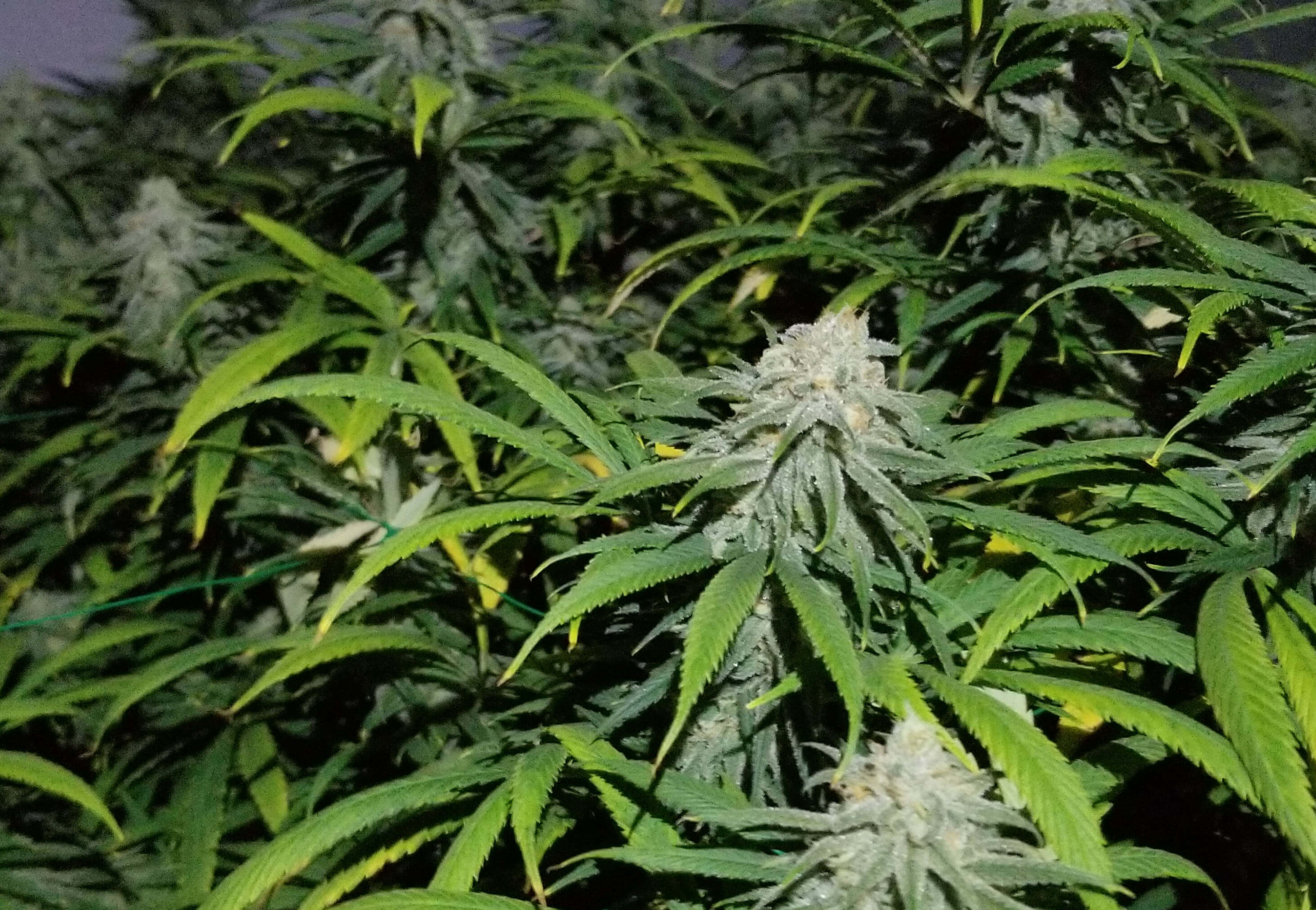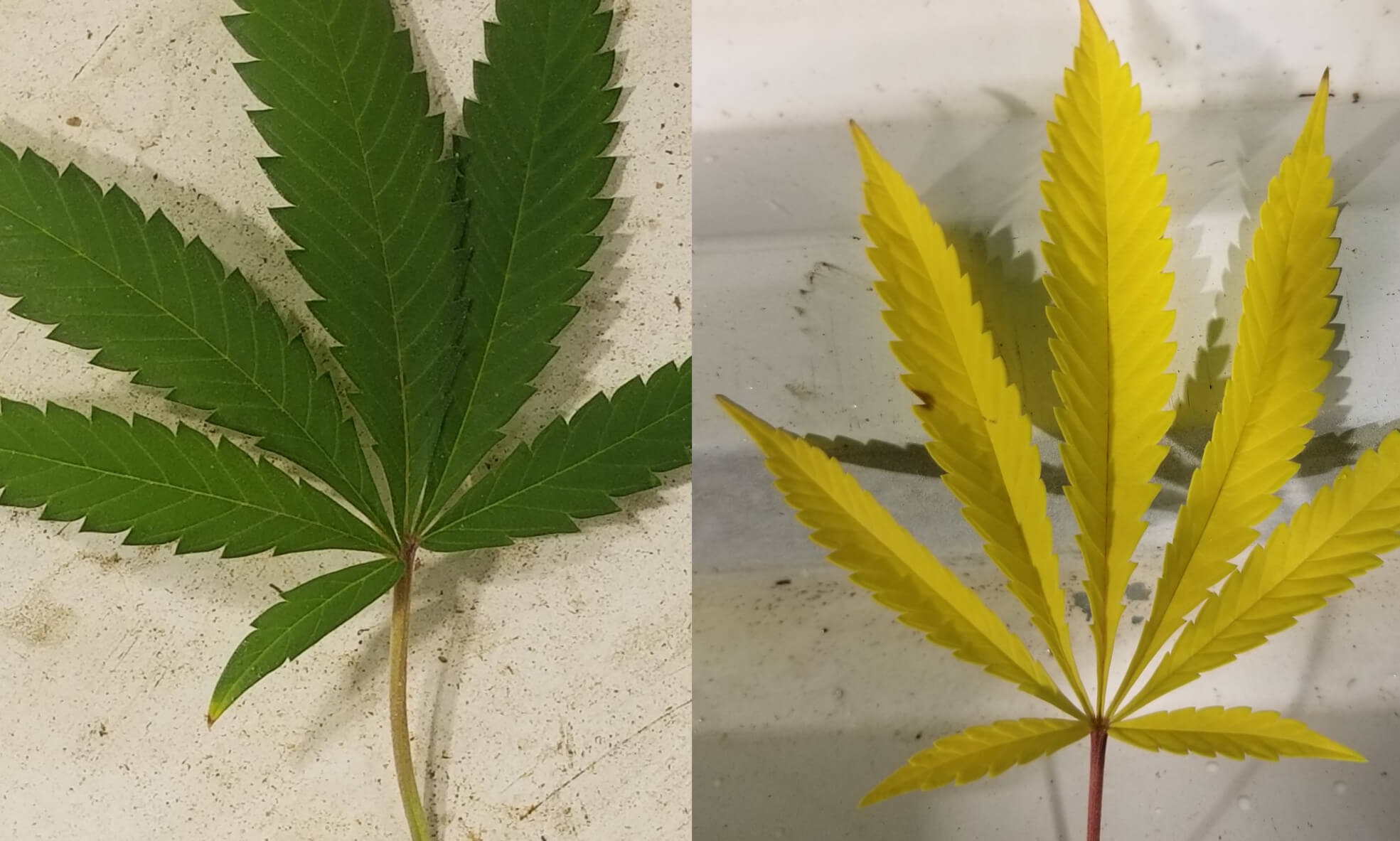- What is Nutrient Mobility?
- Symptom Expression in Cannabis
We all know that nutrients are important for plant health, but what may not be fully understood is that certain nutrients can move within a plant. This is known as nutrient mobility and can be useful in identifying and diagnosing nutrient deficiencies. There are a total of seventeen elements that have been identified as critical to plant growth, three non-minerals and fourteen mineral elements (1). Oxygen enters plants through the leaves by air and through the roots by water. Carbon also enters plants through the leaves by air along with oxygen as carbon dioxide. Hydrogen enters plants through the roots by water along with oxygen. The remaining fourteen mineral elements (nitrogen, phosphorus, potassium, calcium, magnesium, sulfur, boron, chlorine, copper, iron, manganese, molybdenum, nickel, and zinc), are dissolved in water and are absorbed by plants through the medium. They can be divided into macronutrients and micronutrients based on the quantities required by plants. Any deficiency of these nutrients can possibly obstruct growth. When certain nutrients are absorbed by a plant, those nutrients can be immobile while other nutrients can be remobilized to areas on the plant that have a greater demand. Knowing which elements are mobile will help provide information when diagnosing any deficiency symptoms.
What is Nutrient Mobility?
Nutrient mobility is the ability of certain elements to remobilize inside a plant to areas of greater need. Since immobile elements do not move much within a plant, their deficiency symptoms will generally occur in new plant growth. When mobile elements are needed they are moved from older growth to newer growth, this causes deficiency symptoms in older growth.

Most nutrient deficiencies require a certain amount of time for symptoms to show. As the days pass deficiencies, and even toxicities, are revealed as the plant grows, especially when nutrient demand is highest. The reasons behind the nutrient deficiencies could be numerous. Obviously, if the element is not adequately available for the plant in the growing medium, then a deficiency can occur. Other issues that can cause deficiency symptoms include nutrients being unavailable due to pH imbalance, soil temperature being too low to uptake nutrients and water, or the growing medium may be waterlogged or saturated with water creating anaerobic conditions (3).
Symptom Expression in Cannabis
Symptom expression is a term used in horticulture to describe physical traits that offer information as to what is afflicting a host plant. For example, the symptom expression of nitrogen toxicity is dark green leaves with nimble branches that lodge or flatten out due to the inability to support itself (4). Nitrogen contributes to the cannabis plant’s green appearance. Since nitrogen is a component of chlorophyll, older leaves will turn yellow or chlorosis in appearance. Let’s take a look at nitrogen, a mobile macronutrient, and how its deficiency is expressed in cannabis plants.

Other nutrients that are also mobile include: phosphorus, potassium, magnesium, chlorine, nickel, and molybdenum. These elements have a range of symptoms expressed when they are deficient within a plant that may be different from a nitrogen deficiency which will require further study.
Comments powered by Talkyard.